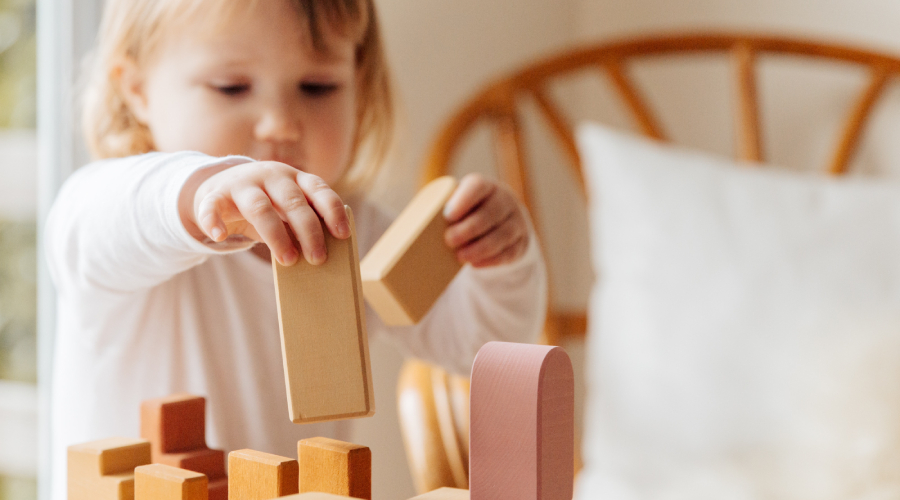In a rush? Here's the quick run-down.
A lot of us in the Early Years often feel a bit cut off from the rest of the education sector.
You might find the term Pre-School an unfair description for the 3-4-year-old rooms in your settings, because it makes it seem like that stage of nursery is simply prep for primary school. But we know the Early Years is way more than a holding bay.
We do help prepare children for schooling. But much more importantly, we lay the foundations to prepare children for every transition in their lives. In the climate of this chaotic year, with a global pandemic and racial disparities rightly in focus, it’s fair to feel like nothing can really prepare us for what may come next.
But we the teachers, the educators — we can teach and nurture children holistically to thrive. This starts with laying the foundation for learning, and teaching children to handle big transitions. When we do that, we show just how important the Early Years really is, and connect it directly to the rest of the education sector.

Entering child care is one of the first big transitions in a child’s life. In many ways, it sets the tone for how children process change and new challenges. And if this transition is stressful, the child may carry those memories and anxiety on to future transitions.
We need to remember that parents are transitioning right along with their children. Those early interactions at open days and during induction periods are essential to familiarise the parent with the people who will be looking after their child and the new environment. We need to build parent partnerships from the start, because when parents feel secure and comfortable, the child will too. At the same time, an anxious parent can easily transfer that same feeling to their children.
Our responsibility is right there in the EYFS, as we’re asked to “separate [children] from the main carer with support and encouragement from a familiar adult.”
When children enter their new early years environment, they’re in an unfamiliar environment with new faces and new routines. I remember attending nursery and not wanting to eat the food because it wasn’t like the food we ate at home, feeling anxious because I had never been left by my mother with people that weren’t family, close family friends or from my ethnic background.
Some children may have never interacted with people outside of their culture or race before, which is just one of the reasons why it’s so important to have a variety of practitioners or make sure at least that they have knowledge of different demographics and cultures so children can feel connected to their new environment, teachers and carers. When children are unable to connect and adjust to the setting, the transition can also be a stressful experience for the parents.

During their time at your setting, children will shape their ability to handle transitions in life, most notably their next transition into primary school.
Primary schools do inevitably have more of a rigid structure, often a little more academic, while still maintaining play experiences and familiar patterns from the Early Years. This is why it’s important that children do start to have a consistent routine, which allows them to play freely alongside moments of adult-set, focused play.
These moments might focus on developing their ability to complete a set task and build their concentration, such as in communication and language, which they’ll need when they start school. Circle times, the environment, and group activities encourage children to be social, engage in conversation, work and play with each other collaboratively, explore and share information. This is something Vygotksy calls social-constructive interaction, as children put together their own perceptions of the world and create their own social norms.
Teaching children academically is important, but developing their life skills and perception of the world is the foundation of all learning. It’s one of the most important core skills, and the common thread between the Early Years and the rest of our education system.
1. Information handover – Educators use the settling-in period to find out important information from the child’s parents; like what the child likes or dislikes, their key interests and valuable information about their family or culture. Build a parent partnership and the child will soon build a connection with the staff and setting. Parents can also use the settling period to get to know the staff and share their culture or traditions. Inclusive practice is important so it’s vital you make parents feel like they don’t have to hold back, and are comfortable making suggestions on what can be improved in your setting to make your children feel at home.
2. Prepare children for what’s next – Settings and parents need to have conversations about the next transition their child’s going to make. Showing them pictures of their new setting, it’s environment and staff team or arranging visits before they move on to let children familiarise themselves with the environment. Allow children to choose their outfits or try on their uniform in preparation for their start to build their excitement. Preparation is important because if not managed right, new surroundings and sudden change can be overwhelming – making transitions and settling in periods a traumatic shock to the system.
3. Independence – Parents and professionals should allow children to explore the new environment freely. This is so they can familiarise themselves with their new surroundings and eventually adjust and become comfortable. At the EY stage, children should be able to choose who they want to be their key person based on the initial interaction and who they may feel comfortable with. It’s worth remembering this may not always be possible, because some educators may have too many key children.

Writing with 19 years’ experience working with children, I would also like to acknowledge that this article has been written with all children in mind but I understand that each child is different and transitions can affect each individual differently. Neurodiverse and neurotypical children may have different needs when it comes to handling transitions, and Early Years educators need to be aware of this.
We are one sector with a variety of practice but we all can agree that a child-centred approach is good practice. It is best practice to have balance within all levels of the education sector hierarchy. This will help in making well-informed decisions and having an understanding of the wider community dynamic, which will help with transitions and inclusive practice.
Self-image and self-esteem are built on how we view and feel about ourselves. Children become aware of who they are and what they like even before they become fully verbal. Because of this, it’s important we celebrate individuality and develop and support their sense of pride and self-esteem.
By meeting our children’s needs, we are able to build their confidence and they will become more willing to explore, seek out new challenges, make transitions and adapt to change. That’s how we give children the best start to life, and prepare them for every transition that might be ahead of them.
Please note: here at Famly we love sharing creative activities for you to try with the children at your setting, but you know them best. Take the time to consider adaptions you might need to make so these activities are accessible and developmentally appropriate for the children you work with. Just as you ordinarily would, conduct risk assessments for your children and your setting before undertaking new activities, and ensure you and your staff are following your own health and safety guidelines.